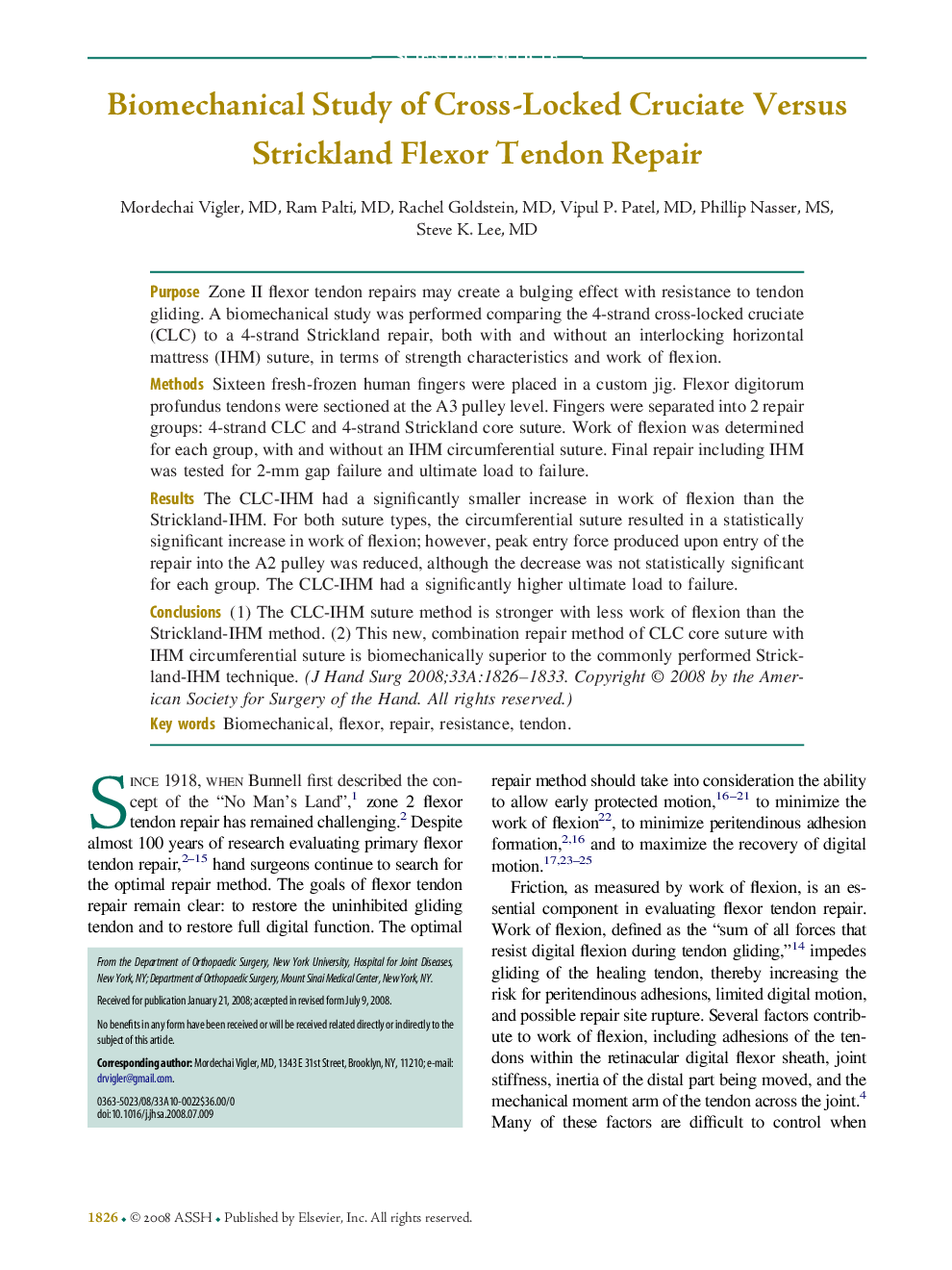| Article ID | Journal | Published Year | Pages | File Type |
|---|---|---|---|---|
| 4069533 | The Journal of Hand Surgery | 2008 | 8 Pages |
PurposeZone II flexor tendon repairs may create a bulging effect with resistance to tendon gliding. A biomechanical study was performed comparing the 4-strand cross-locked cruciate (CLC) to a 4-strand Strickland repair, both with and without an interlocking horizontal mattress (IHM) suture, in terms of strength characteristics and work of flexion.MethodsSixteen fresh-frozen human fingers were placed in a custom jig. Flexor digitorum profundus tendons were sectioned at the A3 pulley level. Fingers were separated into 2 repair groups: 4-strand CLC and 4-strand Strickland core suture. Work of flexion was determined for each group, with and without an IHM circumferential suture. Final repair including IHM was tested for 2-mm gap failure and ultimate load to failure.ResultsThe CLC-IHM had a significantly smaller increase in work of flexion than the Strickland-IHM. For both suture types, the circumferential suture resulted in a statistically significant increase in work of flexion; however, peak entry force produced upon entry of the repair into the A2 pulley was reduced, although the decrease was not statistically significant for each group. The CLC-IHM had a significantly higher ultimate load to failure.Conclusions(1) The CLC-IHM suture method is stronger with less work of flexion than the Strickland-IHM method. (2) This new, combination repair method of CLC core suture with IHM circumferential suture is biomechanically superior to the commonly performed Strickland-IHM technique.
